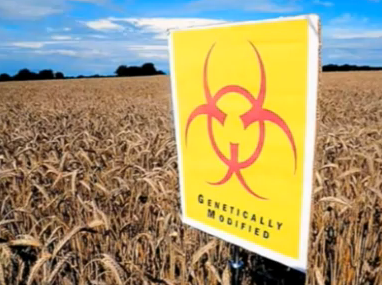 [1]
[1]
Think about what you’ve eaten this week. If you’ve eaten any processed foods that weren’t certified organic (guilty!)then they probably contained genetically modified organisms (GMOs). Today over 70 percent of corn and 90 percent of soy are genetically modified, and these two crops form the basis of a typical American diet.
SayNoToGMOs.org – Get started! [2] from April Macaraeg [3] on Vimeo [4].
Let’s talk GMOs
Genetically Modified Organisms (also called GM, GE or GMOs) refers to crop plants that are consumed by animals and/or humans that have been tweaked or modified in a lab to boost desired traits such as: the ability of the plant to produce its own pesticide, disease resistance and improved nutritional value. These results have no health benefit, only an economic benefit to the company producing them.
Food with GMOs looks and tastes the same, but it’s not the same. Food producers have been altering and messing with our food with the blessing of the FDA, but without our permission.
GMO labeling isn’t required in the US. Does that bother you?
It bothers me. We have the right to know what’s going into our food-don’t we? Yet In the US the FDA doesn’t require the labeling of GMOs in food ingredient lists. If we take a look at our friends in the EU and other countries -GMO labeling has been the norm for years.
GMOs place organic crops at risk
The USDA continues to support deregulation of crops such as alfalfa, corn and sugar beets. This deregulation creates a real risk for cross contamination. Pollen from GM crops and trees can contaminate nearby crops and wild plants of the same type, except for soy, which doesn’t cross-pollinate. We can bid farewell to our organic crops if GM crops continue to grow.
Dangers of GMOs
The effects of GMOs haven’t been studied in humans. Pretty scary to imagine what they are doing to us since we do know what GMO’s are doing to lab animals:
- Toxic and allergic reactions
- Sick and dead livestock
- Infertility
- Immune problems
- Damage to virtually every organ studied in lab animals.
How many times have you heard someone say: “I don’t remember kids having food allergies when I was growing up”? Maybe GMO’s are the cause or at least a factor in this surge of food allergies, environmental allergies, ADHD and other diagnoses.
What can we do to avoid GMO’s?
Our pocket books can do some of the talking since food buying power has a tremendous impact on our food system. If we continue to support sustainable farmers we are sending a message to those producing foods that are NOT sustainable -letting them know that we don’t want them.
Here are a few tips to avoid GMOs in food:
- Buy a share directly from a farm [5] (CSA) that is USDA Certified Organic. Ask if they sell produce that is non-GMO.
- By food that isn’t processed-opt for whole foods that are certified organic.
- Grow your own food using organic heirloom seeds.
- Shop at your local farmers market and don’t be afraid to ask the question: “is your food non-GMO?”
- Look for food labels that say “non-GMO” or “GMO free”. There seem to be more and more companies willing to label their products, although not required.
- Buy wild fish rather than farm raised and meat that was 100% grass fed. Fish and livestock are many times fed GM feed.
- Avoid aspartame [6] as a sweetener-it is derived from GMOs.
- Know which foods are most likely to contain GMOs:
- Corn, soybeans, dairy, meats, canola and cottonseed oil and sugar beets.
More ideas on how to help
- Demand that all GMO foods are required to be labeled.
- Sign the Organic Consumers Association’s Truth-In-Labeling Petition [7]
- Support current legislation to stop GMOs as listed on SaynotoGMOs.org [8]
Bottom line: Take the time to investigate where your food is coming from. Keep your family safe by asking the right questions and educating yourself on the issues.
Do you try to avoid food with GMOs?
Sources:
Video used with permission of SaynotoGMOs.org [8]
Healthy Child Healthy World
If this post helped you, please share it. And please grab our RSS feed [9] or sign up for free e-mail [10] updates to get more Groovy Green info hot off the press! Thanks!
[Top photos used under Creative Commons from John S. Quarterman [11]/Flickr]